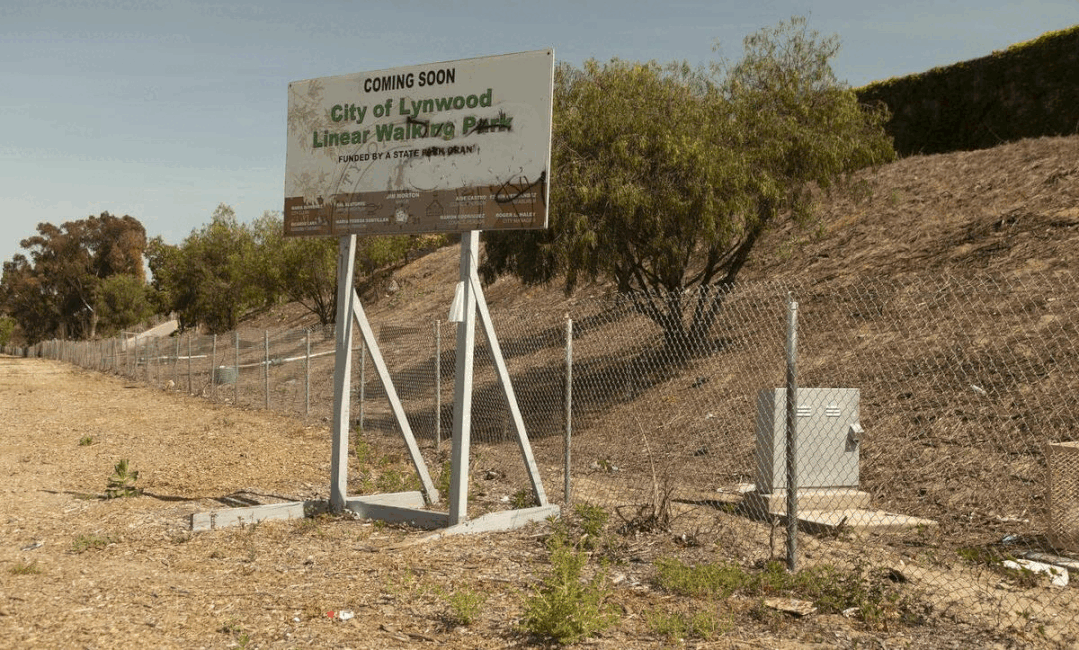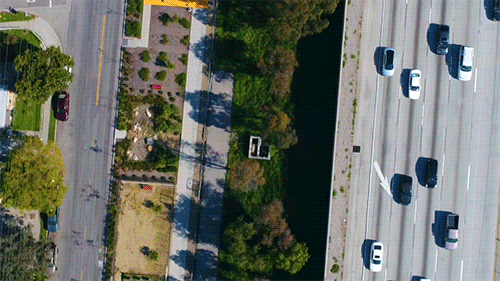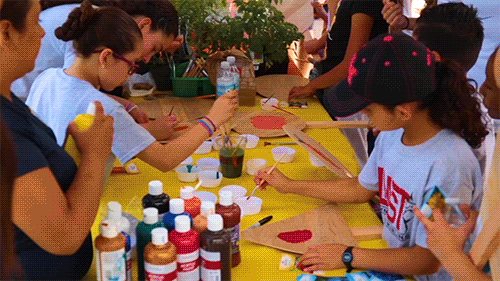查看完整案例


收藏

下载
©SWA Group
Lynwood, California is bisected by a massive freeway corridor, which severed neighborhoods and created a rift in the community. Ricardo Lara Linear Park serves to remedy the negative impacts of the freeway by restoring a sense of community to the city. Just over a mile in length, the multi-block scheme was envisioned to support the many aspirations of the Lynwood community. Through robust community engagement, the park was programmed with health and community in mind. This linear park was recognized in 2018 with a ULI Urban Open Space – Special Community Impact Award, a new category inspired by this project.
In 2021, Ricardo Lara Park won the 2021 ASLA National Award of Excellence.
©SWA Group
Project Background
In the 1990s, when Interstate 105 was constructed, it cut directly through the City of Lynwood along with several other majority Black and Hispanic communities. Lynwood is only now beginning to recover from the devastating impacts of this reconfiguration, which have been exacerbated by decreased property values, business closures, and “white flight”. Today, the neighborhoods in the shadow of the freeway corridor remain underserved by many basic needs and amenities, including access to safe and equitable outdoor spaces.
©SWA Group
In 2014, the design team partnered with the City of Lynwood to transform a derelict freeway-adjacent right of way into a 5.25-acre, five-block linear park. The park supports an abundance of recreational amenities and gathering spaces for the approximately 26,000 people who live within a half-mile walking distance. The park’s programming focuses on exercise, education, and play, while its bold, gestural design reinforces the neighborhood’s unique vitality. Today, the park serves to reconnect the City of Lynwood across the freeway, begin to repair the brutal history of discriminatory development, and celebrate a growing community’s vibrant future.
©SWA Group
Project Challenges
Today, many metropolitan areas remain scarred by highway projects from the Eisenhower era, when federal money helped build out 90 percent of the US interstate system. These projects, which were typically met with resistance from local property owners, often targeted non-white and non-affluent communities with less political agency than their Caucasian, middle-class counterparts. Using historical redlining maps as spatial armatures for infrastructure planning, highway corridors displaced thousands of residents, and continue to disproportionately plague underserved communities with an array of well-cataloged problems, including low walkability, increased vehicular dependency, gridlock, degraded environments, poor air quality, and sprawl. And worse, once built, these highways often just get bigger. Interstate 105 in Los Angeles is one such highway, cutting through communities in South Central L.A. and bisecting the city of Lynwood, just north of Compton.
©SWA Group
Throughout the past few decades, Lynwood has exemplified the struggles of many urban communities in similar straits. Its more affluent residents, and many businesses, gradually fled the community as the freeway rendered it a less desirable place to live, and its populace shifted, becoming younger, with a middle-class Black and Latino-majority demographic. In 2014, the City of Lynwood moved to reclaim a one-mile section of unutilized freeway-adjacent right of way as a much-needed gathering place and community resource.
Goal and Strategy
1. Repurposing Infrastructure
With the construction of the I-105 freeway – among the country’s most expensive and extensively litigated infrastructure projects – a visual and physical barrier was erected through the heart of this diverse, densely populated part of Los Angeles County. Ricardo Lara Linear Park reclaims more than five acres of fallow land along the freeway corridor, creating a high-value community amenity that offers much-needed environmental and recreational benefits. Although only one mile in length, the park demonstrates how creative thinking – paired with modest investment – can leverage existing infrastructure to serve a historically park-poor neighborhood.
©SWA Group
2
Health and Placemaking
The urban scar left by the freeway has had both subtle and profound impacts on public well-being. Green space has historically been limited, and many residents (43 percent) must leave their neighborhoods to buy groceries – rendering Lynwood among the United States’ notorious “food deserts” due to its dearth of healthy eating choices. To ameliorate this disadvantage, one block of the park is fully devoted to a community garden, with 20 raised beds available for rent and 2 associated shared toolsheds. The garden promotes hands-on learning as well as heathy eating, and brings the community together in shared efforts to plant, cultivate, and harvest its own produce.
©SWA Group
In addition to the beautification of an abandoned lot, and the fortification of local food equity, the park is a critical artery for exercise and recreation. Fitness stations that support more intensive exercise programs in the neighborhood, along with a series of play structures, public artworks, and other amenities promote healthy lifestyles and establish a place for residents to gather, socialize, learn, and explore. Taking advantage of its geographic proximity to the LA River bike path, the linear park serves as a local gateway to regional recreational networks. Critically, the park also reconnects neighborhoods on either side of the freeway, offering a continuous path for walking and jogging as well as safe, accessible underpass linkages at each of its five block intersections.
©SWA Group
3
Environment and Resilience
Complex environmental issues came to the fore as the design team engaged with the community to investigate the site’s potential. In one of the park’s crowning achievements, a series of strategically placed basins and bioswales now treat the equivalent of six swimming pools’ worth of runoff from the adjacent Caltrans embankment. This intervention doubles as a flood prevention strategy, addressing a problem that the neighborhood used to experience frequently. Over 200,000 square feet of pervious surface, bioswales, and detention ponds were added in total. Due to the topography of the surrounding site, the park encompasses a catchment area of 24 acres and collects 82,700 cubic feet of stormwater per year. The added bioswale in the park also filters polluted freeway runoff before it reaches the water table.
©SWA Group
©SWA Group
While the park is within 100 feet of the freeway, both noise and air particulates are mitigated by a 10-foot-tall sound wall along its entire length. Softscape interventions, similarly, help mitigate heat island effects. By planting more than 300 new trees across the park, the design expands canopy coverage to 48 percent – a significant upgrade in a surrounding city where the average coverage is only 15 percent. The new trees were strategically placed throughout the park to shade features like benches and berms. In addition, a diverse climate-adapted plant community buffers heat from the adjacent streets, making the park an even more inviting destination during summer months.
©SWA Group
4
Community-Led Design
The design team was tasked with absorbing the voices of the community and designing a space that serves a full range of local stakeholders. A series of community workshops conducted by the city unearthed ideas for the new park that included a pedestrian walkway, an exercise station, a children’s play area, and a dog park. The result is an artfully designed five-block park with something for everyone: a dramatic improvement for a site formerly characterized as a garbage-strewn wasteland.
©SWA Group
In order to foster stewardship from the beginning, public meetings encouraged community contribution to the overall park design. During one such event, participants were asked to engage in an artistic exercise to depict animals in abstract color paper collages. These designs were later incorporated into the mosaic tiles inlaid in the picnic tables and benches – a tactile reminder of the process of design, and a way for a vibrant neighborhood to lay claim to its identity.
©SWA Group
Conclusion
In Los Angeles County, where park availability and access are infamously low, and where the legacies of redlining and urban renewal remain painfully present, the Ricardo Lara Linear Park proves that underutilized land can be meaningfully repurposed to reflect the aspirations of a vibrant, but historically disenfranchised community. Today, the park is host to flourishing food gardens and laughing children, and the very infrastructure that has long divided and isolated the surrounding community has become an amenity that unites it.
©SWA Group
Project Name:Ricardo Lara Linear Park
Location:Lynwood, California, U.S.A
Size:5 urban blocks, 2.2 hectare
Consultants:
VCA, Civil and Structural Engineering
P2S, Electrical and Mechanical Engineering
Sweeney & Associates, Irrigation
Cumming, Cost Estimating
Wallace Lab, Soils Testing
From Lot to Spot, Outreach
Onward Engineering, Construction Management
C.S. Legacy Construction, Inc., General Contractor
SWA Design Team:Ying-Yu Hung, Trent Okamura, Matthew Ells










































